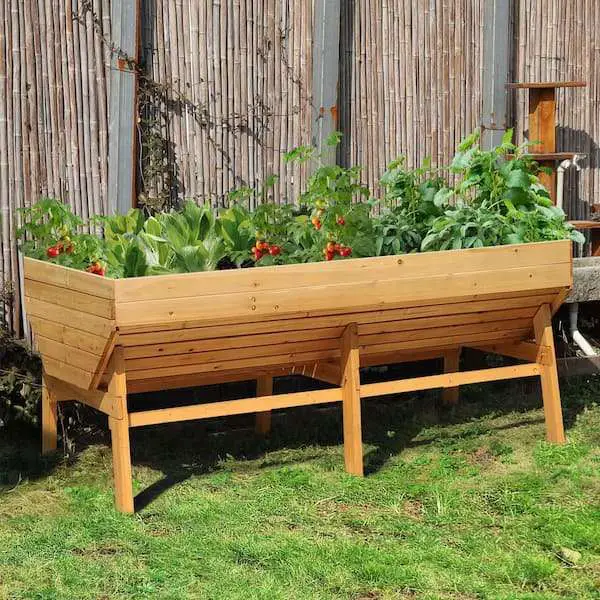In this article, we will discuss the ideal depth for a raised garden bed. Whether you’re into off grid living or simply enjoy gardening, understanding the proper depth for your garden bed is essential for healthy plant growth. We will explore different factors to consider when determining the depth and provide helpful guidelines to ensure your garden bed is at the ideal depth. By the end, you’ll have all the knowledge you need to create a successful raised garden bed.
The Ideal Depth for a Raised Garden Bed
If you’re considering starting a garden, raised garden beds offer numerous advantages over traditional in-ground gardens. Not only do they provide increased accessibility, better soil drainage, and weed and pest control, but they also extend the growing season. However, one common question that arises when planning a raised garden bed is, “How deep should it be?” In this article, we will explore the factors that influence bed depth, determine the ideal depth for various scenarios, and discuss ways to deal with limited space. Let’s dive in!
Factors Influencing Bed Depth
When deciding on the depth of your raised garden bed, several factors come into play. These factors include planting preferences, root depth requirements, soil type and composition, and climate and weather conditions.
Planting Preferences
The types of plants you intend to grow in your garden will greatly influence the depth of your raised bed. Some plants, such as lettuce and herbs, have shallow root systems and therefore don’t require a deep bed. Others, like tomatoes or carrots, have deeper root systems and will need a greater depth to thrive.
Root Depth Requirements
Understanding the root depth requirements of your chosen plants is crucial in determining the appropriate bed depth. While some plants may only need six to eight inches of soil to establish their roots, others may require up to two feet or more. Researching the specific root depth requirements for your desired plants is a valuable step in planning your raised garden bed.
Soil Type and Composition
Different soil types have different water-holding capacities and drainage properties. Soil composition can affect the availability of nutrients and oxygen to plant roots. Heavy clay soils, for example, drain poorly, leading to waterlogged soil and potential root rot. In contrast, sandy soils drain quickly and may require more frequent watering. Assessing your soil type and composition will help determine the depth needed to provide optimal growing conditions for your plants.
Climate and Weather Conditions
The climate and weather conditions in your region can also impact the depth requirements of your garden bed. In areas with hot and dry climates, deeper beds can provide extra soil volume to retain moisture and prevent plants from drying out. On the other hand, regions with heavy rainfall may benefit from shallower beds to avoid waterlogged soil and potential root diseases.
Determining the Ideal Depth
Now that we’ve considered the factors that influence bed depth, let’s discuss how to determine the ideal depth for your raised garden bed.
Consider the Root Systems
As mentioned earlier, different plants have varying root depth requirements. Understanding the root systems of your plants will help you determine how deep your garden bed should be. For shallow-rooted plants, a depth of six to eight inches is usually sufficient. For deep-rooted crops, such as carrots or potatoes, a deeper bed of 12 to 18 inches is recommended.
Plan for Deep-Rooted Crops
If you plan to grow deep-rooted crops like tomatoes or corn, it’s important to account for their root depth requirements when designing your raised bed. In these cases, a bed depth of 18 to 24 inches is ideal to allow the roots to establish and expand freely.
Optimal Soil Depth for Common Vegetables
While specific plants have different depth requirements, there are general guidelines for common vegetables. Most vegetables do well with a minimum depth of six to eight inches. However, plants like tomatoes, peppers, and eggplants thrive with a depth of 12 to 18 inches. Root crops, such as carrots and radishes, benefit from a depth of 12 inches or more.
Adapting Depth for Different Gardening Techniques
If you plan to use intensive gardening techniques, such as square foot gardening or vertical gardening, you can adapt the bed depth accordingly. For square foot gardening, where plants are spaced closely together, a depth of six to eight inches is typically sufficient. Vertical gardening, which involves growing plants vertically on trellises or supports, can be achieved with shallower beds of six to twelve inches.
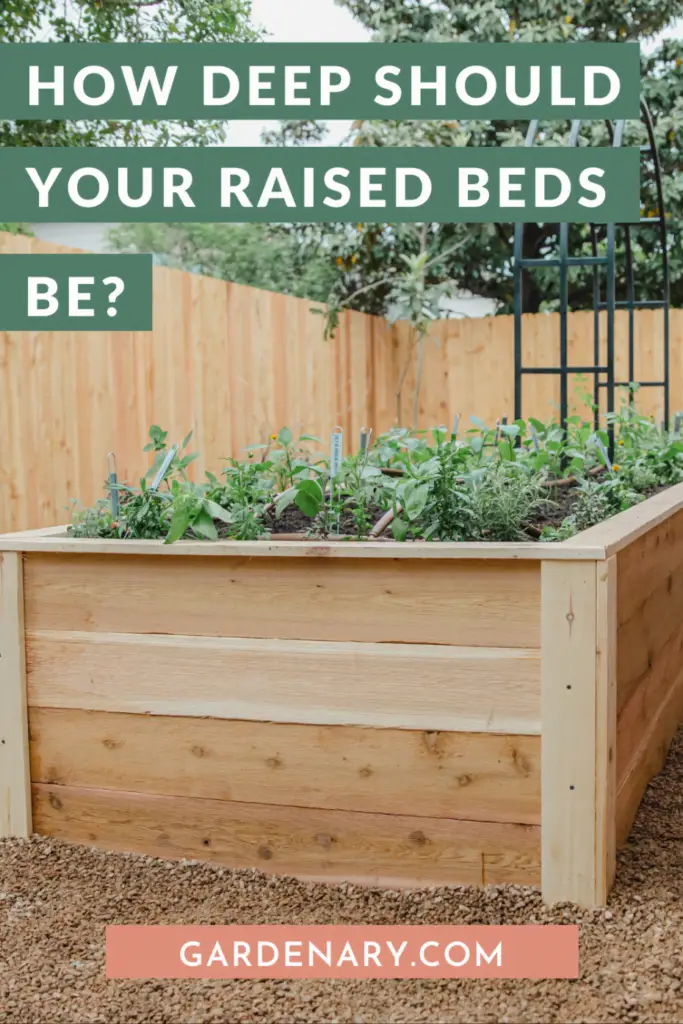
Minimum Depth Requirements
While it’s important to provide adequate depth for your plants’ root systems, there are also minimum depth requirements to ensure their overall health and productivity.
Minimum Depth for Shallow-Rooted Plants
Shallow-rooted plants, like lettuce or herbs, can thrive in garden beds with a minimum depth of six to eight inches. However, keep in mind that deeper beds offer more soil volume for moisture retention, which can be beneficial in dry climates or during extended drought periods.
Recommended Minimum Depth for Most Vegetables
For most vegetables, a minimum depth of six to eight inches is sufficient for their root systems. This depth allows the plants to access enough soil nutrients and water while ensuring healthy growth. However, deeper beds can provide additional benefits, such as improved drainage and root expansion.
Exceptions and Special Cases
There are a few exceptions and special cases where plants may require deeper bed depths. For example, asparagus and rhubarb have extensive root systems and benefit from a depth of at least 12 inches. Deep-rooted trees or shrubs, if grown in raised beds, may require even greater depths to accommodate their expansive roots.
Dealing with Limited Space
If you have limited space for your raised garden bed, there are still options available to accommodate your plants’ needs while making the most of the available depth.
Solutions for Limited Depth Space
If you’re faced with limited depth space, consider selecting plants with shallower root systems or growing compact vegetable varieties. Additionally, utilizing vertical gardening techniques or multi-tiered beds can help maximize the growing area without sacrificing plant health.
Vertical Gardening Options
Vertical gardening is a space-saving technique that involves growing plants vertically on trellises, walls, or structures. By utilizing vertical space, you can grow more plants in less space while maintaining adequate root depth for each plant. Crops such as beans, cucumbers, and tomatoes thrive in vertical gardening systems.
Container Alternatives
If space is extremely limited, container gardening is an excellent option. You can use pots, buckets, or other containers with sufficient drainage holes and appropriate soil mixtures. Make sure to choose containers that provide enough depth for your plants’ root systems. For shallow-rooted plants, a depth of six to eight inches is generally adequate, while deeper-rooted crops may require 12 inches or more.
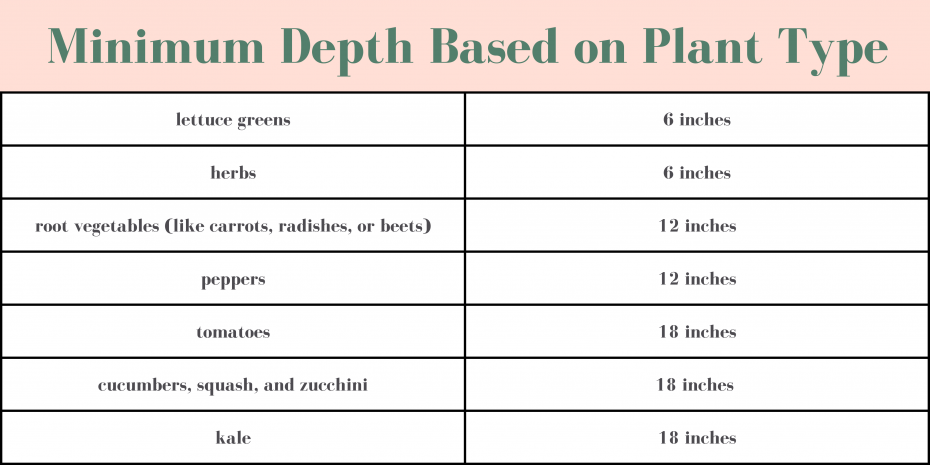
Materials for Raised Garden Bed Construction
When it comes to building raised garden beds, there are various materials you can choose from. Each material has its own benefits and considerations.
Wooden Beds
Wood is a popular choice for constructing raised beds due to its affordability, availability, and ease of use. Cedar and redwood are excellent choices as they are naturally resistant to decay and insects. However, any untreated lumber can be used, and it’s recommended to avoid pressure-treated wood, which may contain harmful chemicals.
Steel or Metal Beds
Steel or metal beds offer durability and a modern aesthetic to your garden. They are long-lasting and resistant to rot and warping. However, metal can heat up quickly in direct sunlight, potentially overheating the soil and affecting plant growth.
Concrete Block or Brick Beds
Concrete blocks or bricks provide a sturdy and permanent option for raised bed construction. They are durable and retain heat, which can be advantageous in cooler climates. However, these materials can be more expensive than wood or metal, and their weight can make installation challenging.
Alternative Materials
If you’re looking for eco-friendly options, consider using recycled plastic lumber or composite materials made from recycled wood and plastic. These materials are resistant to decay, insect damage, and warping. Additionally, straw bales, repurposed containers, or even logs can serve as alternative materials for constructing raised garden beds.
Preparing the Bed for Planting
Before planting in your raised garden bed, it’s essential to prepare the bed properly to create an ideal growing environment for your plants.
Clearing the Area and Removing Existing Vegetation
Start by clearing the area where your raised bed will be located. Remove any existing vegetation or weeds to prevent competition and ensure optimum growing conditions for your plants. This step is especially important if you’re creating a new garden bed.
Laying Down a Weed Barrier
To further prevent weed growth, consider laying down a weed barrier before filling the bed with soil. Landscape fabric or cardboard can be used as effective weed barriers, helping to minimize the amount of weeding required throughout the growing season.
Adding Nutrient-Rich Soil Amendments
To provide your plants with the essential nutrients they need to thrive, enrich the bed with organic matter and soil amendments. Compost, well-rotted manure, and other organic materials can be incorporated into the existing soil to improve its structure, fertility, and water-holding capacity.
Leveling the Bed and Ensuring Proper Drainage
Ensure your raised bed is level before planting to promote even water distribution and prevent pooling or runoff. Additionally, ensure that the bed has adequate drainage by ensuring it is not sitting on a low point, as this can lead to waterlogged soil and root rot. Consider adding drainage holes or gravel at the bottom of the bed if necessary.

Maintaining and Managing Depth
Maintaining and managing the depth of your raised garden bed is an ongoing task to ensure the health and productivity of your plants.
Monitoring Soil Moisture
Regularly monitor the soil moisture levels in your garden bed to prevent over or under-watering. Stick your finger into the soil to check the moisture content. If the top inch of soil feels dry, it’s time to water. Adjust watering frequency based on weather conditions, the type of plants, and their moisture requirements.
Adding Organic Matter and Compost
To replenish soil nutrients and improve soil structure, regularly add organic matter and compost to your raised garden bed. This practice helps maintain optimum soil health and fertility, promoting strong plant growth and productivity.
Protecting Against Erosion
Raised garden beds can be more vulnerable to erosion, especially during heavy rainfall or if the bed is located on a slope. Prevent soil erosion by adding mulch, such as straw or shredded leaves, around your plants. Mulch helps retain moisture, suppress weed growth, and protect the soil surface from erosion.
Adjusting Depth as Needed
As your plants grow and develop, they may require additional depth to accommodate their expanding root systems. Check the depth of the soil periodically and add more if necessary. It’s better to err on the side of caution and provide sufficient soil depth for healthy root growth.
Watering Techniques for Raised Beds
Proper watering techniques are crucial to the success of your raised bed garden. Here are some tips to help you maintain optimal soil moisture levels.
Understanding Watering Needs
Different plants have varying watering requirements. Some plants, like succulents or drought-tolerant herbs, prefer drier conditions, whereas others, like leafy greens or tomatoes, require consistently moist soil. Understanding the watering needs of your plants is key to preventing under or overwatering.
Drip Irrigation Systems
Drip irrigation systems are an efficient way to water your raised garden bed. These systems deliver water directly to the plant roots, reducing water waste through evaporation or runoff. With a drip irrigation system, you can easily adjust the watering schedule to accommodate the specific needs of each plant.
Mulching to Retain Moisture
Mulching is a beneficial practice in raised garden beds as it helps retain soil moisture by reducing evaporation. Apply a layer of organic mulch, such as straw or wood chips, around your plants. This will help conserve water and suppress weed growth, resulting in healthier and more productive plants.
Avoiding Overwatering
Overwatering is a common mistake in gardening. While it’s essential to keep the soil adequately moist, plants also need oxygen to avoid root rot. To avoid overwatering, always check the soil moisture before watering. If the soil feels wet or saturated, hold off on watering until it becomes slightly dry.
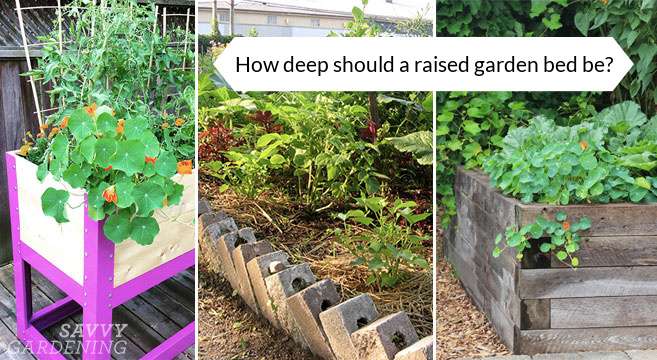
Potential Challenges and Troubleshooting
Despite the many benefits of raised garden beds, there can be challenges along the way. Here are some common challenges you may encounter and ways to troubleshoot them.
Poor Drainage Issues
If you notice poor drainage in your raised garden bed, it may be due to compacted soil or insufficient drainage holes. To improve drainage, loosen the soil by incorporating organic matter or using a garden fork to loosen compacted areas. Additionally, ensure that your raised bed has enough drainage holes or gravel at the bottom to allow excess water to escape.
Nutrient Deficiencies
Over time, the nutrient levels in your raised bed soil may become depleted, leading to nutrient deficiencies in your plants. To address this issue, regularly add compost or organic fertilizers to replenish the soil’s nutrients. Conduct soil tests occasionally to determine any specific nutrient deficiencies and adjust accordingly.
Weed Management
Weeds can quickly take over a raised garden bed, competing with your plants for nutrients, water, and sunlight. Regular weeding is crucial to maintain a healthy garden. Consider using organic weed control methods, such as hand-weeding or mulching, to suppress weed growth without introducing harmful chemicals.
Pest Control
Pests can damage your plants and reduce yields in your raised garden bed. Implementing organic pest control strategies, such as companion planting, adding beneficial insects, or using physical barriers like netting, can help control pests without the use of harmful pesticides.
Creating a Raised Bed Garden Design
Designing your raised garden bed involves more than just its depth. Consider these aspects when creating a garden design to enhance plant growth and efficiency.
Layout and Dimensions
Plan the layout and dimensions of your raised garden bed to maximize space and allow easy access for planting, watering, and harvesting. Consider the available space, sunlight exposure, and the overall aesthetic appeal.
Companion Planting
Companion planting is the practice of planting two or more plant species together to benefit each other. Some plants have natural pest-repellent properties or can enhance each other’s growth and flavor. Research companion planting combinations to promote garden health and increase productivity.
Crop Rotation
To prevent the buildup of pests and diseases and ensure soil fertility, implement crop rotation in your raised garden bed design. Rotate crops from one season to another, ensuring not to plant the same crop in the same location for consecutive seasons.
Incorporating Aesthetics
Raised garden beds not only provide food and herbs, but they can also enhance the aesthetics of your outdoor space. Consider incorporating design elements, such as colorful flowers, trellises, or decorative border materials, to create an appealing and inviting garden.
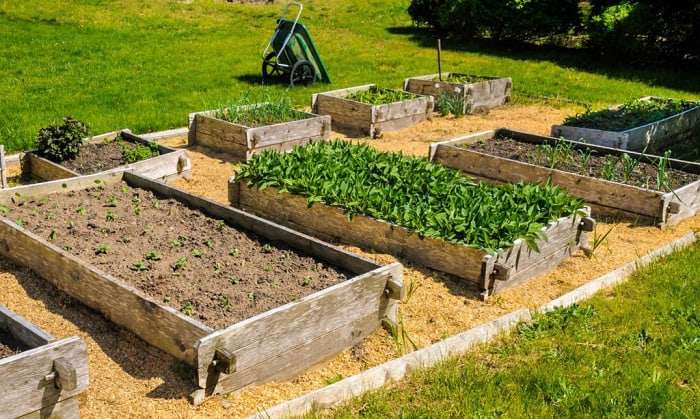
Building Multiple Layers and Tiered Beds
If you have ample space, building multiple layers or tiered beds can provide additional planting areas and maximize the use of vertical space.
Benefits of Multiple Layers
Multiple layers or tiered beds offer various benefits. They allow you to group plants based on their specific depth requirements, create microclimates within the garden, and maximize the growing area without taking up extra ground space.
Designing and Constructing Tiered Beds
When designing a tiered bed, ensure that each layer has adequate depth and sufficient drainage. Build sturdy supports or structures to accommodate the weight of the soil and plants. Consider incorporating retaining walls or steps to create visually appealing and functional tiered beds.
Choosing Plants for Each Layer
Select plants that have similar environmental needs for each layer of your tiered garden bed. Plants with shallow root systems can be placed in the top layer, while those with deeper roots can be planted in lower layers. This strategy helps ensure optimal growing conditions and efficient space utilization.
Adjusting Bed Depth for Raised Bed Styles
Different raised bed styles may require adjustments in bed depth based on their unique designs and requirements.
Square or Rectangular Beds
Square or rectangular raised beds are the most common design. The depth of these beds can range from six to 24 inches based on the factors previously mentioned. Consider the planting preferences, root depth requirements, and soil type when determining the appropriate depth for square or rectangular beds.
Circular or Curved Beds
Circular or curved raised beds can create a visually striking focal point in your garden. When constructing these beds, ensure that they have a consistent depth that complies with the root depth requirements of the plants you plan to grow.
Keyhole Garden Beds
Keyhole garden beds are a unique design that incorporates a small pathway or hole into the circular or rectangular bed, resembling a keyhole. This design allows easy access to all areas of the garden bed. Adjust the bed depth as necessary based on the specific plants you intend to grow in the keyhole section.
Circular Keyhole Garden Beds
Similar to regular keyhole garden beds, circular keyhole garden beds offer a central access point for easy maintenance and harvesting. Consider the depth requirements of your chosen plants and adjust the bed depth accordingly.
Conclusion
In conclusion, determining the ideal depth for a raised garden bed is crucial to ensuring successful gardening and plant growth. By considering factors such as planting preferences, root depth requirements, soil type and composition, and climate conditions, you can create an optimal growing environment for your plants. Adjusting bed depth based on specific gardening techniques and available space can help maximize your gardening capabilities. Remember to regularly maintain and manage the depth, follow proper watering techniques, and address any potential challenges or pest issues that may arise. With a well-designed raised garden bed, you can enjoy the benefits of improved accessibility, better soil drainage, extended growing seasons, and increased gardening efficiency. Happy gardening!
Off grid living, Gardening, How deep should a raised garden bed be?

